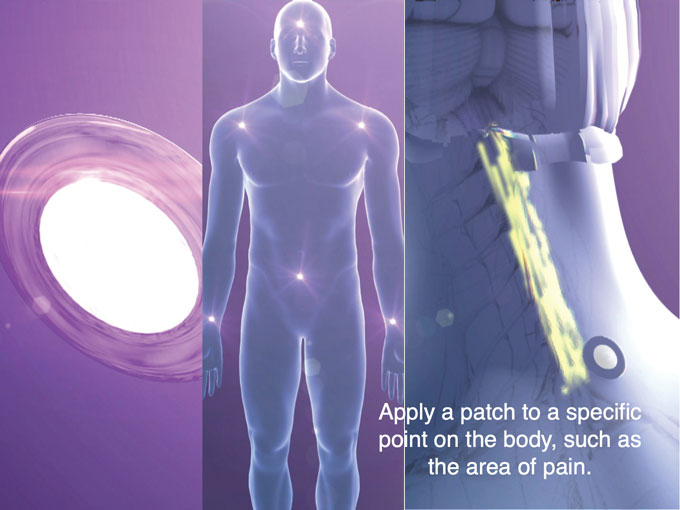Are you tired of relying on medication for pain relief? Look no further than infrared light therapy, a natural and effective strategy for managing pain. Infrared light therapy utilizes specific wavelengths of light to penetrate deep into the body, promoting healing and reducing inflammation. By stimulating blood flow and accelerating tissue repair, this non-invasive treatment can provide lasting relief for a wide range of conditions, from arthritis to muscle strains. Discover the power of infrared light therapy and embrace a holistic approach to pain management.
Understanding Infrared Light Therapy
Infrared light therapy, also known as infrared therapy or photobiomodulation, is a non-invasive and drug-free approach to pain management. It involves the use of infrared light to stimulate healing and relieve pain in various parts of the body. This therapy has gained popularity in recent years due to its effectiveness and minimal side effects.
Definition of Infrared Light Therapy
Infrared light therapy utilizes specific wavelengths of light in the infrared spectrum to penetrate deep into the tissues of the body. The light is absorbed by the cells, triggering a cascade of biochemical reactions that promote healing and reduce pain.
How Infrared Light Therapy Works
Infrared light therapy works by delivering energy in the form of photons to the cells of the body. These photons are absorbed by the mitochondria, which are the powerhouses of the cells, and stimulate the production of ATP (adenosine triphosphate), the fuel that cells need to function optimally. This increased energy production leads to improved cellular function and enhanced healing processes.
Benefits of Infrared Light Therapy
Infrared light therapy offers a wide range of benefits for pain management and overall wellness. Some of the key benefits include:
-
Pain Relief: Infrared light therapy has been shown to alleviate pain by reducing inflammation, promoting the release of endorphins (natural painkillers), and improving blood circulation.
-
Faster Healing: By stimulating cellular function and increasing energy production, infrared light therapy accelerates the healing process and reduces recovery time.
-
Non-Invasive and Drug-Free: Unlike medications and invasive procedures, infrared light therapy is a natural and non-invasive approach to pain management, which eliminates the risk of side effects and dependency.
-
Versatility: Infrared light therapy can be used to treat a wide range of conditions, including muscle and joint pain, arthritis, back pain, neuropathic pain, fibromyalgia, and sports injuries.
Types of Infrared Light Therapy
There are several types of infrared light therapy devices available on the market. Some common types include:
-
Infrared Saunas: These saunas emit infrared light to heat the body directly, providing whole-body therapy. They are often used for relaxation, detoxification, and pain relief.
-
Infrared Light Panels: These panels deliver targeted infrared light to specific areas of the body, allowing for localized treatment of pain and inflammation.
-
Handheld Devices: These portable devices emit infrared light and can be used to treat various areas of the body, making them convenient for at-home use.
-
Infrared Bed Systems: These systems consist of a bed or mat embedded with infrared light-emitting panels, providing full-body therapy.
Each type of infrared light therapy device has its own benefits and considerations, so it is important to choose the one that best suits your needs and preferences.
The Science Behind Infrared Light Therapy
To understand how infrared light therapy works, it is essential to explore the scientific principles behind it. The therapy’s effectiveness can be attributed to its ability to penetrate deep into the tissues of the body, its effects on cellular function, and its interaction with pain receptors.
Penetration of Infrared Light
Infrared light has the unique ability to penetrate through the skin and reach deep tissues, such as muscles, tendons, and joints. This deep tissue penetration allows the light to directly target the source of pain and inflammation, providing more effective relief compared to surface-level treatments.
Effects on Cellular Function
When infrared light is absorbed by cells, it stimulates the mitochondria to produce more ATP. ATP is essential for cellular processes, including tissue repair, pain reduction, and inflammation control. By increasing ATP production, infrared light therapy enhances the overall function and vitality of cells, leading to improved healing and pain management.
Interaction with Pain Receptors
Infrared light therapy has been found to interact with pain receptors in the body, influencing the perception and transmission of pain signals. It can modulate the activity of sensory nerves and block certain pain transmissions, resulting in reduced pain sensations and increased comfort.
Conditions and Pain Types that Can Be Managed with Infrared Light Therapy
Infrared light therapy has shown promising results in managing various types of pain and treating several medical conditions. Here are some examples of conditions and pain types that can be effectively managed with this therapy:
Muscle and Joint Pain
Infrared light therapy can help relieve muscle and joint pain caused by overuse, injuries, or conditions such as tendonitis and bursitis. The therapy promotes blood circulation and relaxes the muscles, reducing inflammation and pain.
Arthritis
For individuals with arthritis, infrared light therapy offers a non-invasive and drug-free alternative to manage pain and stiffness. The therapy’s deep penetration and anti-inflammatory effects can help alleviate symptoms and improve joint mobility.
Back Pain
Back pain is a common ailment that can greatly affect one’s quality of life. Infrared light therapy can help reduce back pain by improving blood flow, reducing muscle tension, and promoting the healing of injured tissues.
Neuropathic Pain
Neuropathic pain, which is caused by damage or dysfunction in the nervous system, can be challenging to treat. Infrared light therapy has shown promise in managing neuropathic pain by modulating nerve activity and reducing inflammation.
Fibromyalgia
Infrared light therapy has been used as a complementary treatment for fibromyalgia, a chronic condition characterized by widespread pain and fatigue. The therapy’s ability to reduce pain, improve sleep quality, and enhance overall well-being can greatly benefit individuals with fibromyalgia.
Sports Injuries
Athletes and active individuals often experience sports-related injuries, such as sprains, strains, and contusions. Infrared light therapy can help accelerate the healing process, reduce pain and inflammation, and promote faster recovery, enabling athletes to return to their activities sooner.
Post-Surgical Pain
After undergoing surgery, patients may experience post-operative pain and inflammation. Infrared light therapy can be used as part of a comprehensive pain management plan to alleviate discomfort, accelerate the healing process, and minimize the need for pain medications.
Using Infrared Light Therapy for Pain Relief
To effectively use infrared light therapy for pain relief, it is important to understand how to apply the therapy, determine the frequency and duration of treatment, consider combining it with other modalities, and prioritize safety.
Applying Infrared Light Therapy
Infrared light therapy can be applied directly to the skin using various devices. When using a handheld device or a light panel, the therapy is typically performed by placing the device directly on or near the affected area, ensuring that the light reaches the target tissue. In the case of infrared saunas or bed systems, the entire body or specific body parts come into contact with the emitted infrared light.
Frequency and Duration of Treatment
The frequency and duration of infrared light therapy sessions can vary depending on the specific condition being treated and the individual’s response to the therapy. Generally, it is recommended to start with shorter sessions of 10-20 minutes and gradually increase the duration as tolerated. The therapy may be performed multiple times per week or as advised by a healthcare professional.
Combining Infrared Light Therapy with Other Modalities
Infrared light therapy can be used as a standalone treatment or combined with other complementary modalities for enhanced pain relief and healing. For example, combining the therapy with physical therapy or exercises tailored to the condition can further improve outcomes. It is important to consult with a healthcare professional to determine the most effective combination of treatments for individual needs.
Safety Considerations
While infrared light therapy is generally considered safe, there are a few safety considerations to keep in mind. It is important to follow the manufacturer’s instructions when using a specific device and avoid overexposure to the light. Additionally, individuals with certain medical conditions, such as skin cancer, should consult with a healthcare professional before starting infrared light therapy.
Comparing Infrared Light Therapy with Other Pain Management Options
Infrared light therapy offers a natural and non-invasive alternative to traditional pain management options. Let’s explore how it compares to other common approaches:
Infrared Light Therapy vs. Medications
Unlike medications for pain management, infrared light therapy does not pose the risk of side effects or dependency. Additionally, medications often target symptoms, while infrared light therapy addresses the underlying causes of pain and promotes natural healing.
Infrared Light Therapy vs. Heat Therapy
Heat therapy, such as heating pads or hot packs, provides temporary relief by increasing blood flow to the affected area. Infrared light therapy, on the other hand, penetrates deeper into the tissues and offers more targeted and longer-lasting pain relief.
Infrared Light Therapy vs. Physical Therapy
Physical therapy focuses on restoring mobility, strength, and function through exercises and manual techniques. Infrared light therapy can complement physical therapy by reducing pain, inflammation, and muscle tension, making the rehabilitation process more comfortable and effective.
Infrared Light Therapy vs. Acupuncture
Acupuncture is a traditional Chinese medicine practice that involves the insertion of tiny needles into specific points on the body to alleviate pain. Infrared light therapy, on the other hand, provides pain relief through the targeted delivery of light energy. Both approaches have been effective in pain management and can be used together for synergistic effects.
Research and Evidence Supporting Infrared Light Therapy
There is a growing body of research and evidence supporting the effectiveness of infrared light therapy for pain management. Let’s explore the different types of evidence available:
Clinical Studies on Infrared Light Therapy
Numerous clinical studies have been conducted to investigate the efficacy of infrared light therapy in various conditions. These studies have consistently shown positive results, demonstrating the therapy’s ability to reduce pain, promote healing, and improve quality of life.
Patient Testimonials and Experiences
Many individuals have reported significant pain reduction and improved quality of life after undergoing infrared light therapy. These firsthand accounts provide valuable insights into the therapy’s efficacy and the positive impact it can have on individuals with chronic pain or specific conditions.
Limitations and Controversies in the Field
While the majority of research supports the effectiveness of infrared light therapy, there are some limitations and controversies in the field. Some studies may have small sample sizes or methodological limitations, and the optimal treatment parameters are still being explored. However, the overall body of evidence indicates that infrared light therapy is a promising and safe approach to pain management.
Choosing an Infrared Light Therapy Device
When considering an infrared light therapy device, there are several factors to consider to ensure the best fit for individual needs. Let’s explore these factors and the different types of devices available:
Factors to Consider
Some factors to consider when choosing an infrared light therapy device include the specific condition being treated, the area of the body that requires treatment, the desired portability and convenience, and the budget.
Different Types of Infrared Light Therapy Devices
As mentioned earlier, there are various types of infrared light therapy devices, including infrared saunas, light panels, handheld devices, and bed systems. Each type offers unique features and benefits, so it is important to choose one that aligns with individual preferences and treatment requirements.
Price Range and Features
Infrared light therapy devices can vary in price, depending on the type and brand. It is important to consider the desired features, such as adjustable settings, portability, and ease of use, when comparing devices. It is also recommended to read customer reviews and seek recommendations from healthcare professionals or trusted sources.
User-Friendly Options
For individuals who prefer simplicity and ease of use, there are user-friendly infrared light therapy devices available. These devices often come with clear instructions and intuitive controls, making it easy to incorporate the therapy into daily routines.
Tips and Precautions for Using Infrared Light Therapy
To ensure safe and effective use of infrared light therapy, it is important to follow these tips and precautions:
Consulting with a Healthcare Professional
Before starting infrared light therapy, it is advisable to consult with a healthcare professional, especially if there are any underlying medical conditions or concerns. They can provide personalized guidance and ensure that the therapy is appropriate and safe.
Proper Set-Up and Usage
When using an infrared light therapy device, it is important to carefully follow the manufacturer’s instructions for proper set-up and usage. This includes positioning the device correctly, ensuring appropriate distance and duration of exposure, and adhering to any safety guidelines provided.
Avoiding Overexposure and Burns
To avoid overexposure and burns, it is important to be mindful of the heat generated by some infrared light therapy devices. Keeping a comfortable distance from the device and using protective coverings or clothing, if necessary, can help prevent excessive heat exposure to the skin.
Potential Side Effects
While rare, there are a few potential side effects associated with infrared light therapy. These may include temporary skin redness, increased sensitivity, or mild discomfort. If any adverse reactions occur, it is important to discontinue the therapy and consult with a healthcare professional.
Infrared Light Therapy as a Complementary Approach to Pain Management
Infrared light therapy can be used as a complementary approach to pain management, integrating it with conventional treatments, exercise, and lifestyle changes.
Integrating Infrared Light Therapy with Conventional Treatments
Infrared light therapy can be used alongside conventional treatments, such as medications, physical therapy, or acupuncture, to enhance pain relief and promote faster healing. It is important to discuss the integration of infrared light therapy with a healthcare professional to ensure a comprehensive and personalized pain management plan.
Combining with Exercise and Lifestyle Changes
Physical activity and healthy lifestyle choices can greatly complement the benefits of infrared light therapy. Engaging in regular exercise, maintaining a balanced diet, and managing stress can optimize the therapy’s effectiveness and contribute to long-term pain management.
Long-Term Maintenance and Prevention
Infrared light therapy can be used as a long-term maintenance strategy for chronic conditions or as a preventive measure to minimize the risk of recurring pain. Regular sessions, combined with healthy lifestyle habits, can help individuals maintain optimal pain relief and overall well-being.
Conclusion
Infrared light therapy is a natural and effective approach to pain management that offers numerous benefits for individuals seeking relief from various conditions. By understanding how infrared light therapy works, exploring its benefits, and considering the different aspects of its usage and device selection, individuals can make informed decisions about incorporating this therapy into their pain management strategies. With its growing body of research and evidence, infrared light therapy continues to gain recognition as a safe, non-invasive, and drug-free alternative for pain relief and enhanced healing.





